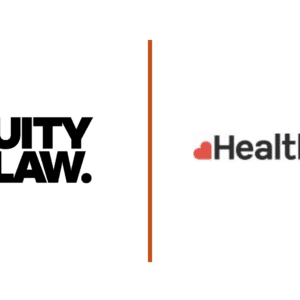Coronavirus Job Retention Scheme Update – Tuesday 7 April 2020
After the Government published its first round of clarifications on the Coronavirus Job Retention Scheme (on 27 March), employers were still left with a number of areas of uncertainty. Requests for further clarity were answered over the weekend. This update summarises the clarifications that have been provided and supplements the other guidance that we have produced over the last few weeks. If you have any queries which are not addressed within this note or our other updates, please contact our employment team.
One area that we are desperately awaiting guidance on is the issue of holiday. The new Government guidance unfortunately remains silent on how annual leave and furlough leave will interact with each other and if they can run concurrently or not. This startling omission from the new guidance is all the more stark given the upcoming Easter bank holidays. Urgent clarity is therefore required but in the meantime, please see our guidance note on furlough leave and annual leave for further discussion on these issues and potential workarounds, which can be accessed here.
PRE-REQUISITES FOR REIMBURSEMENT
As already confirmed, any entity with a UK payroll can claim for reimbursement under the Coronavirus Job Retention Scheme (the Scheme). However, the guidance has been updated to confirm that employers must be enrolled for PAYE online to claim under the Scheme (the previous guidance referred to an ePAYE reference number but didn’t expressly state this). The guidance confirms that it can take up to 10 days to set up PAYE online. We are therefore encouraging all employers who intend to claim for reimbursement from HMRC to check that they are set up for PAYE online in good time before the portal opens (HMRC are expecting to have this up and running by the end of April).
The guidance states that in order to be eligible for the grant, employers must ensure they document the agreement to place an employee on furlough leave by confirming it in writing, and records should be kept for five years.
It remains unclear whether employers who are designating their employees as being on furlough leave but are topping up salaries, so that aside from the requirement to not do any work the employees will not experience any changes to their terms and conditions of employment, will need to get agreement to this from their employees. However, in light of the updated guidance, we recommend that employers document any furlough arrangements in writing with the respective employees, irrespective of whether or not salaries are being topped up.
INDIVIDUALS THAT CAN BE FURLOUGHED
Apprentices
The new guidance clarifies that apprentices can be furloughed and can continue to train whilst on furlough leave. However, the employer will still need to comply with their Apprenticeship Minimum Wage, National Living Wage or National Minimum Wage obligations for any time that the apprentice spends training. The Government has also produced guidance for providers of apprenticeship training and assessment, which is available here.
Carers (of individuals who are “shielding” or otherwise vulnerable)
We already knew that extremely vulnerable individuals who have received a letter from the NHS which confirms that they must “shield” themselves for at least 12 weeks, can be furloughed to reduce the financial impact of shielding (if the shielding individual cannot work from home). We understand that primary carers will also get letters to confirm that they must shield, and in such circumstances these individuals can also be furloughed. However, we have received queries about carers that are not expressly required to shield. The new guidance suggests that it would be reasonable to put employees that have caring responsibilities “that have been exacerbated by the impact of COVID-19 and which prevent them from working” on furlough leave.
Company directors/LLP members
The guidance helpfully provides more detail regarding furloughing office holders and LLP members. Notably, it confirms that furlough arrangements will need to be adopted formally by the company or LLP through a board resolution or a variation to the LLP agreement respectively. It also confirms that “where furloughed directors need to carry out particular duties to fulfil the statutory obligations they owe to their company, they may do so provided they do no more than would reasonably be judged necessary for that purpose”. The guidance expressly prohibits directors from doing anything to generate revenue or provide services for the business – but given the statutory duty to promote the success of the company (which includes fostering business relationships with suppliers, customers and others) it remains unclear exactly how much a director can and can’t do.
Casual and agency workers
One area that was unclear was whether workers could be furloughed. We thought, yes, if they are paid through PAYE and the latest guidance confirms this. Limb (b) workers can be furloughed, as can agency workers. Where the agency is the deemed employer, the agency will be the one to agree the furlough arrangement with the worker. If the worker is employed by an umbrella company, the umbrella company will need to agree any furlough arrangements with the worker.
Public sector contingent workers
Public sector contingent workers may be placed on furlough leave. The Cabinet Office has issued separate guidance which encourages public bodies to continue to pay a proportion of the costs to suppliers of these contingent workers when they cannot work due to the impacts of COVID-19.
RULES DURING FURLOUGH LEAVE
Starting furlough leave
The guidance confirms that claims for furlough should be from the date that the employee stops doing work, not when the agreement to furlough the employee is made. This is a subtle point, but is does suggest that employers could back-date claims for employees who may have been on unpaid leave since 28 February 2020.
Roll-on, roll-off
Each instance of furlough leave must last for a period of at least three consecutive weeks. The previous guidance did not expressly state that the three weeks had to be consecutive, so we welcome this clarification. So long as this is adhered to, and the employee remains eligible, employees may be placed on furlough leave more than once.
However, it is worth noting that there is a line in the latest guidance which states that “grants will be prorated if your employee is only furloughed for part of a pay period”. It is assumed that this deals with a situation in which the employee is furloughed for more than the minimum three weeks but then returns to work in the middle of a subsequent three week pay period. However, this isn’t explicitly stated and the line could also be read to suggest that employees can be furloughed for less than the minimum three weeks. Our view is that this is not the case and employers are advised to continue to apply the three week minimum period. However, we will keep an eye out for further guidance on this point and update employers accordingly.
Working for another employer
We believed that employees that had been furloughed would not be able to take up alternative employment to supplement their income to take place during the time that they would otherwise have been working (but for being furloughed). This is because otherwise, the employee could be receiving 100% pay from one employer as well as 80% pay through the Scheme – which seems to contradict the point of the Scheme entirely. The latest guidance suggests that this may be incorrect. The new guidance states that, if contractually allowed, employees are permitted to work for another employer whilst they are on furlough. Whilst this doesn’t specifically address the point of taking up alternative employment during the hours that employees would otherwise be working (but for being furloughed) neither does it prohibit this and in fact, specifically addresses the issue of an employer taking on an employee who is furloughed elsewhere (explaining that the employee will need to be recorded on payroll using Starter Form C).
Volunteer work
There is a section in the guidance which says that, when employees are on furlough, employers cannot ask them to provide services to or generate revenue for, or on behalf of the business. However, in the same section, the guidance goes on to say “they can take part in volunteer work or training”. Our view is that the reference to “volunteer work” here is to volunteer work generally, rather than volunteering to do work for the employer. The reason for this conclusion is that if employees are able to “volunteer” for their employer, it massively opens up the Scheme to abuse.
FURTHER GUIDANCE ON PAYMENTS AND REIMBURSEMENT
“Regular payments” can be recovered under the Scheme – including overtime, fees and commission
In a somewhat dramatic U-turn (albeit, one we expected) the new guidance confirms that regular payments including wages, past overtime, fees, and compulsory commission payments will be recoverable under the Scheme. However, discretionary and non-cash payments will not be. This creates a much more satisfactory position for employees whose majority of their normal take-home pay is made up of overtime, commission etc. The previous guidance expressly stated that fees, commission and bonuses could not be included.
Employers will still need to pay NICs and pension contributions for employees on furlough leave, however, only the minimum statutory payments can be claimed under the Scheme. Apprenticeship Levy and student loan payments will also need to be paid as usual, but these will not be reimbursed.
Benefit and salary sacrifice schemes
The cost of non-monetary benefits, including taxable Benefits in Kind, and benefits provided through a salary sacrifice scheme, are not included in the grant. However, HMRC has acknowledged that COVID-19 constitutes a ‘life event’ allowing employees to make changes to their salary sacrifice arrangements, should they wish to do so.
Redundancy payments
Redundancy payments cannot be claimed under the Scheme and HMRC have confirmed that they will be monitoring this. It remains unclear if notice payments can be recovered under the Scheme.
National Minimum Wage/National Living Wage compliance
Employees on furlough leave are not considered to be working so can be paid below their appropriate minimum wage under the Scheme. However, where the employee is required to train during their furlough leave, they will be entitled to at least the Apprenticeship Minimum Wage, National Living Wage or National Minimum Wage, as appropriate, for the time spent training. This may result in employers having to top-up the employee’s pay.
It should be noted that the minimum wage rates were raised on 1 April 2020. For the latest rates, please click here.
Tax treatment of Scheme grants
Grant payments received by businesses under the Scheme must be treated as income for Income Tax and Corporation Tax purposes. Employment costs should be deducted as normal.
For more information, please contact our employment team.
Claire Knowles – Partner
Mark Alaszewski – Associate
Rebecca Mahon – Solicitor
Adam McGlynn – Trainee Solicitor






